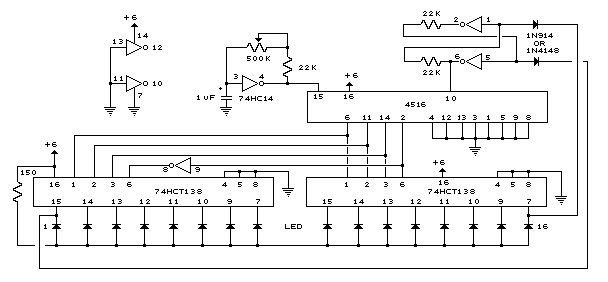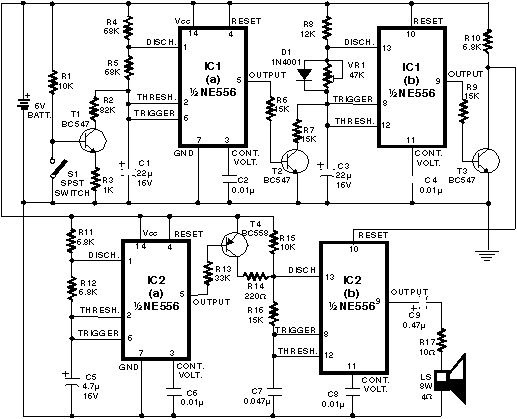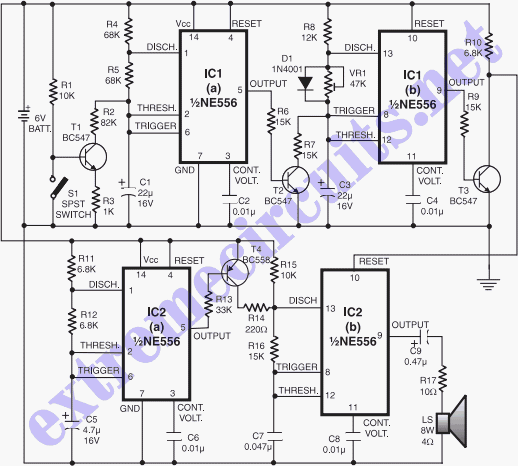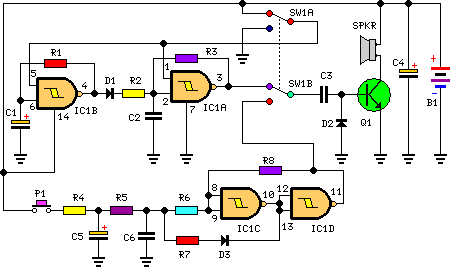
Simple RS232C Level Converter using Transistors
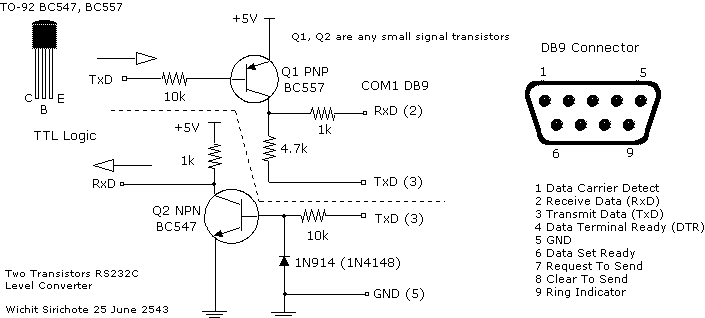
There are many who built the Easy Programmer or C-52 Evaluation Board, asking for the RS232C level converter chip, DS275. Many have changed to MAX232 instead, because it is not available in their home. Here is another simple and cheap circuit using a small signal transistor providing TTL to RS232C level converter.
The circuit described utilizes a small signal transistor to perform the function of converting TTL (Transistor-Transistor Logic) levels to RS232C levels, which are necessary for serial communication in various electronic applications. The RS232C standard specifies voltage levels that differ significantly from TTL logic levels, where TTL typically operates at 0 to 5V, while RS232C uses a range of -15V to +15V.
In this circuit, a small NPN transistor is employed to facilitate the conversion. The base of the transistor is connected to the TTL output signal, and a resistor is used to limit the base current. The emitter of the transistor is connected to ground, while the collector is connected through a pull-up resistor to a positive voltage supply, typically around +12V, which is within the RS232C voltage range.
When the TTL signal is high (approximately 5V), the transistor turns on, allowing current to flow from the collector to the emitter. This action pulls the collector voltage down towards ground level, effectively converting the TTL high state to an RS232C low state. Conversely, when the TTL signal is low (0V), the transistor is off, and the pull-up resistor pulls the collector voltage up to +12V, which corresponds to an RS232C high state.
Additional components may include capacitors for signal smoothing and decoupling, ensuring stable operation and minimizing noise. It is also essential to consider the transistor's switching speed and characteristics to ensure compatibility with the desired data rates of the RS232C communication.
This simple circuit provides a cost-effective solution for users who may not have access to dedicated RS232C level converter ICs, such as the DS275 or MAX232, while still achieving reliable serial communication in their projects.There`re many, who built the Easy Programmer or C-52 Evaluation Board, asking for the RS232C level converter chip, DS275. Many have changed to MAX232 instead, because of not available in his home. Here is another simple and cheap circuit using small signal transistor providing TTL to RS232C level converter.
🔗 External reference
The circuit described utilizes a small signal transistor to perform the function of converting TTL (Transistor-Transistor Logic) levels to RS232C levels, which are necessary for serial communication in various electronic applications. The RS232C standard specifies voltage levels that differ significantly from TTL logic levels, where TTL typically operates at 0 to 5V, while RS232C uses a range of -15V to +15V.
In this circuit, a small NPN transistor is employed to facilitate the conversion. The base of the transistor is connected to the TTL output signal, and a resistor is used to limit the base current. The emitter of the transistor is connected to ground, while the collector is connected through a pull-up resistor to a positive voltage supply, typically around +12V, which is within the RS232C voltage range.
When the TTL signal is high (approximately 5V), the transistor turns on, allowing current to flow from the collector to the emitter. This action pulls the collector voltage down towards ground level, effectively converting the TTL high state to an RS232C low state. Conversely, when the TTL signal is low (0V), the transistor is off, and the pull-up resistor pulls the collector voltage up to +12V, which corresponds to an RS232C high state.
Additional components may include capacitors for signal smoothing and decoupling, ensuring stable operation and minimizing noise. It is also essential to consider the transistor's switching speed and characteristics to ensure compatibility with the desired data rates of the RS232C communication.
This simple circuit provides a cost-effective solution for users who may not have access to dedicated RS232C level converter ICs, such as the DS275 or MAX232, while still achieving reliable serial communication in their projects.There`re many, who built the Easy Programmer or C-52 Evaluation Board, asking for the RS232C level converter chip, DS275. Many have changed to MAX232 instead, because of not available in his home. Here is another simple and cheap circuit using small signal transistor providing TTL to RS232C level converter.
🔗 External reference
